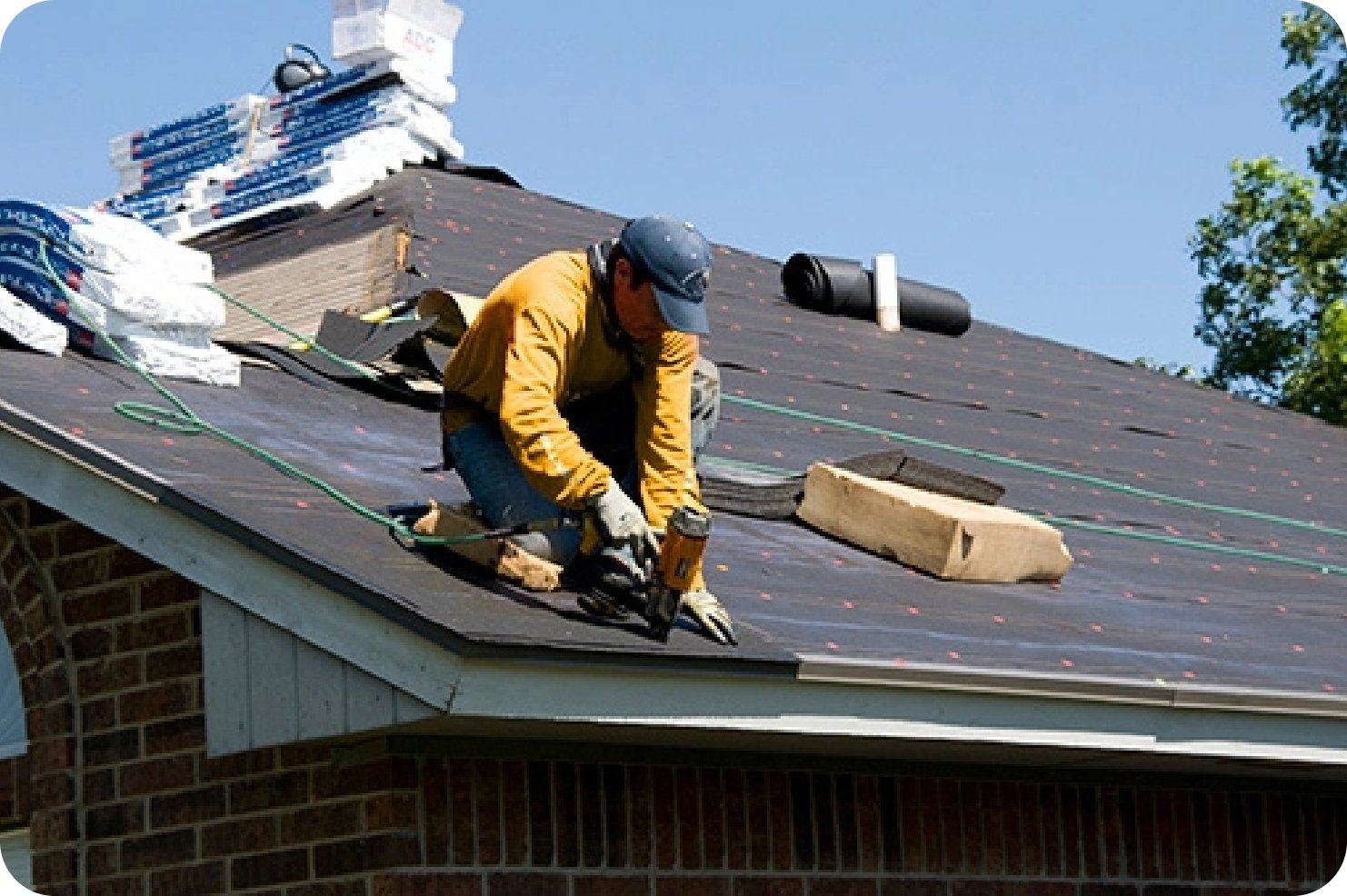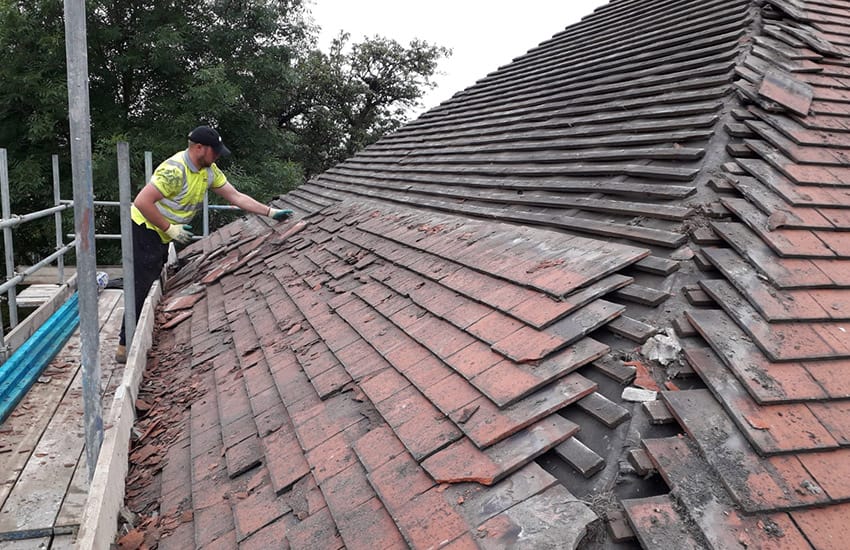Oahu Roofing: Trustworthy Roofing Solutions for Residences and Businesses
Oahu Roofing: Trustworthy Roofing Solutions for Residences and Businesses
Blog Article
Understanding the Various Sorts Of Roofings: A Comprehensive Overview for Homeowners
With an array of alternatives-- varying from the typical gable to the contemporary level-- each kind offers unique benefits and obstacles that must line up with the homeowner's ecological considerations and certain needs. As we discover the complexities of various roofing kinds, it becomes apparent that one size does not fit all; the right selection might stun you.
Saddleback Roof
Gable roof coverings, identified by their triangular form, are among one of the most preferred roof covering styles because of their simplicity and efficiency in shedding water and snow. This design features two sloping sides that satisfy at a ridge, enabling effective water drainage and reducing the threat of water build-up. The steep pitch generally linked with saddleback roofs enhances their capability to manage hefty precipitation, making them appropriate for different climates.
In addition to their functional advantages, saddleback roofs offer aesthetic convenience. They can be adapted to numerous architectural styles, from standard to contemporary homes. The style can additionally suit extra functions such as dormer windows, which improve natural light and air flow in the attic space.
In addition, saddleback roofs give sufficient space for insulation, adding to energy effectiveness. House owners can select from a selection of roof products, including asphalt tiles, steel, and ceramic tiles, further enhancing personalization alternatives.
In spite of their benefits, gable roofs might call for added support in locations susceptible to high winds or hefty snowfall. On the whole, the saddleback roof continues to be a favored choice as a result of its mix of functionality, resilience, and aesthetic appeal.
Apartment Roofs
Flat roofs are frequently identified for their minimal style and practical applications, specifically in industrial and commercial settings (oahu roofing). These roof coverings feature a horizontal or nearly straight surface area, which allows for simple building and construction and versatile room application. While they may do not have the aesthetic appeal of angled roofs, flat roofs provide numerous advantages, specifically in city atmospheres where taking full advantage of area is important
Among the main advantages of flat roofing systems is their accessibility. Home owners can use the roofing area for various purposes, such as roof gardens, terraces, or solar panel installments. Furthermore, flat roof coverings are usually more cost-effective to install and preserve compared to their sloped counterparts, as they call for fewer products and labor.
Usual materials utilized for flat roof coverings consist of built-up roofing (BUR), customized asphalt, and single-ply membrane layers, each offering unique benefits. Generally, level roofs offer as a versatile and practical selection for many homeowners and organizations alike.
Hip Roofings
Hip roof coverings are characterized by their sloped sides that converge on top, developing a ridge. This design stands out from saddleback roofs, as all four sides of a hip roof covering slope downwards toward the wall surfaces, offering a more steady structure. The angle of the inclines can vary, enabling convenience in architectural looks and capability.
Among the key benefits of hip roofs is their capability to hold up against hefty winds and unfavorable climate condition. The sloped surface areas allow better water drainage, minimizing the risk of leaks and water damage. Furthermore, hip roofs offer increased attic room, which can be utilized for storage and even exchanged comfortable locations.
Nonetheless, constructing a hip roofing system can be a lot more intricate and pricey than simpler roof covering kinds, such as saddleback roofs. The added product and labor associated with creating the inclines and guaranteeing correct architectural integrity can bring about greater costs. Regardless of these downsides, lots of home owners prefer hip roofings for their durability, visual appeal, and potential for power performance.
Mansard Roofings
Mansard roof coverings, usually acknowledged by their special four-sided design, function two inclines on each side, with the reduced slope being steeper than the top. This building style, originating from France in the 17th century, is not only aesthetically appealing however practical, as it takes full advantage of the useful space in the top floorings of a structure. The high reduced slope permits for more clearance, making it an optimal selection for loft spaces or attics, which can be transformed right into living areas.
Mansard roofs are characterized by their convenience, suiting various architectural designs, from standard to modern-day. They can be created with different products, including asphalt roof shingles, slate, or steel, offering property owners with a variety of image source choices to suit their preferences and spending plans. Furthermore, the layout enables the integration of dormer windows, improving natural light and air flow in the top degrees.
However, it is vital to take into consideration the possible drawbacks. Mansard roofings may call for even more upkeep because of the complexity of their style, and their steep inclines can be testing for snow and rain overflow. In general, mansard roofings incorporate style with practicality, making them a prominent option amongst property owners looking for distinct building functions.
Shed Roofing Systems
As home owners progressively look for simpleness and capability in their architectural styles, dropped roofing systems have emerged as a preferred option. Identified by a solitary sloping aircraft, a shed roof you could try here covering offers a minimal visual that enhances various home designs, from modern to rustic.
Among the primary benefits of a shed roof covering is its simple building, which often equates to decrease labor and product expenses. This design enables reliable water drainage, lowering the danger of leakages and water damage. In addition, the upright incline provides ample room for skylights, enhancing all-natural light within the interior.
Dropped roofs also use convenience in terms of use. They can be effectively integrated right into additions, garages, or outdoor structures like pavilions and sheds. In addition, this roof covering design can suit various roofing materials, including metal, asphalt roof shingles, or perhaps eco-friendly roofs, lining up with environment-friendly campaigns.
However, it is vital to consider regional environment problems, as hefty snow tons might necessitate modifications to the roof's angle or framework. Generally, dropped roofing systems present a sensible and aesthetically pleasing alternative for property owners seeking to make best use of performance without endangering style.
Final Thought


Gable roofs, characterized by their triangular shape, are amongst the most popular roofing designs due to their simpleness and performance in shedding water and snow. oahu roofing. The high pitch generally connected with gable roofing systems enhances their capacity to handle heavy precipitation, making them suitable for different environments
While they might do not have the visual allure of pitched roofings, level roofs use many advantages, specifically in urban atmospheres where optimizing area is crucial.

Report this page